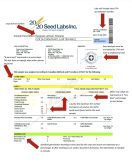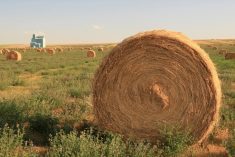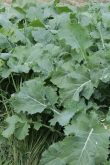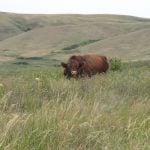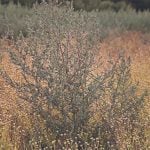Last summer, Canadian Cattlemen caught up with Graeme Finn, rancher and founder of Union Forage, at Ag in Motion. Here’s what he had to say about everything from cover crop blends to the “slow ponies” of the forage world — perennials.
Know your soil
“Before you even start down this journey with cover crops, know what you need in your soil and build that cover crop or for- age down to what suits your soil type,” says Finn. For example, producers with sandy, light soil should look for “massive taproots.”
Read Also
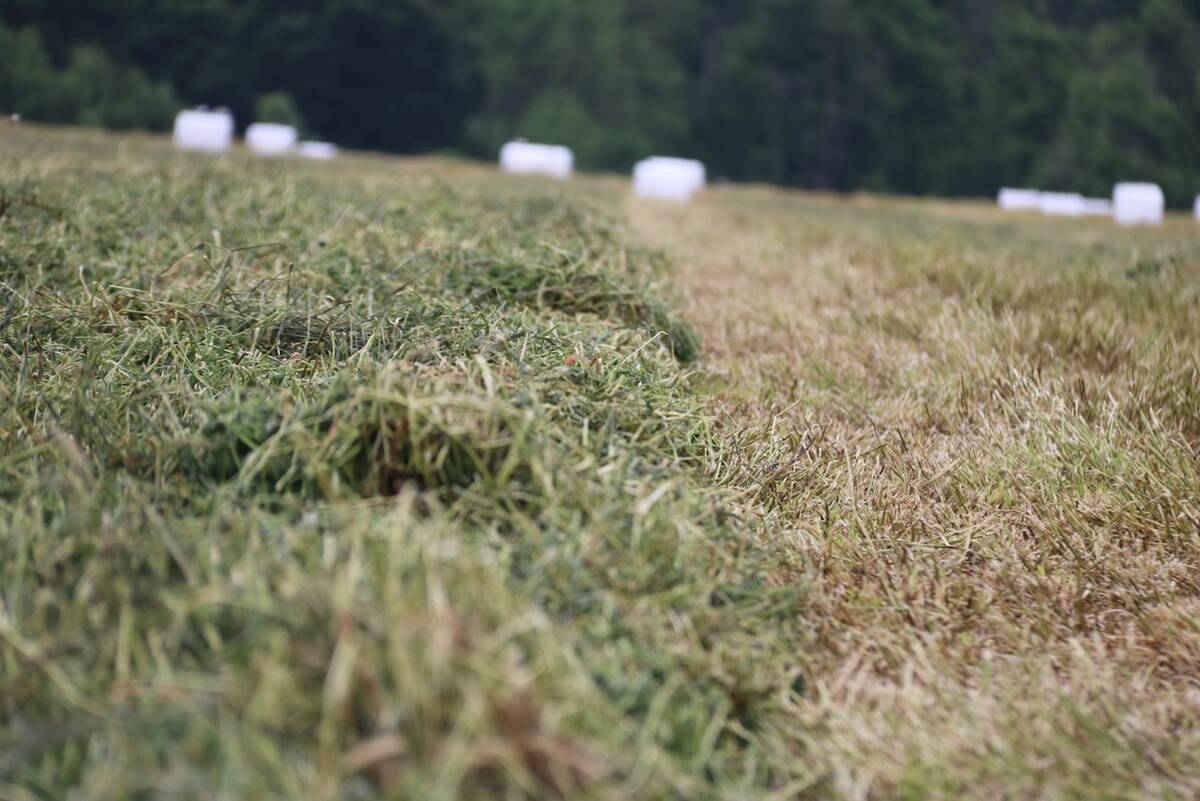
New high performance forage training program to launch in 2026
A new Canadian Forage and Grasslands Asssociation high performance forage program will be a resource for farmers, agronomists and others in the forage sector.
Knowing your soil isn’t just about knowing which plants will perform best — it can affect animal health, too. For example, those with high sulphur soils should avoid brassicas such as forage turnips or rapes. Brassica plants “love sulphur,” says Finn and will store it in their cells. About three days after the cattle eat those brassicas, producers will see them walking in circles, pushing their heads against posts. They’re basically getting headaches, Finn explains, as their brains swell and hemorrhage. The condition, known as bovine polio, kills cattle. High-sulphate water can also trigger the condition. Other symptoms may include progressive blindness, seizures and depression.
Finn also advocates knowing what the soil needs for fertilizer and applying accordingly. While some say farmers can skip the fertilizer, he knows from personal experience that doesn’t work for long.
“When we stopped using fertilizers, everything was good for the first three years and then started going backwards in the next two years.”
He suggests working with an independent agronomist to find out what the soil needs, keeping in mind livestock will add nutrients such as phosphorus and nitrogen. He pegs the cost of a soil sample at around $63. “That’s cheap as chips in the overall farm expenses.”
How many species?
In Finn’s view, anywhere from four to six species in a cover crop blend is great. He suggests producers seed a blend of eight or nine on their own farms.“And then they can just discover what works for them.”
Cereals and peas will do well, he predicts. Forage rapes might do better in drier areas, he says. C-4s such as sorghum generally don’t like competition but do well in drier areas, while sunflowers thrive under competition, he adds.
“Cattle love eating the heads,” Finn says of sunflowers, but they leave the fibrous stalk. If there are too many in the blend, farmers will have to try to seed through the stalks the following year, he cautions.
After observing the first year, producers can start narrowing it down to a few species that work. That might be a combination such as sorghum or peas, or a cereal, pea and brassica. But it’s important to know about the plants in the blend.
“They’ve got to be careful with the C-4s because they’re toxic under two feet tall.” C-4 plants such as sorghum and Sudan grasses evolved to repel grazers while growing on the Serengeti Plains. Once the plants are two inches in height and have set seed, they’re no longer toxic. Migrating grazers ingest the seeds, populating the plains with C-4s as they head south.
Finn avoids perennial legumes in annual cover crop mixes. They tend to be expensive, and don’t start fixing nitrogen until the second or third year. “So really, you put an expensive $4-a-pound crop in there to get forage. And not really good forage because… it doesn’t crown out in the first year. It’s just building root system.”
Low versus high rainfall
Whether you’re in a low or high-rainfall area, “always have a cereal in there,” says Finn. Make sure it’s smooth-awned, if it’s barley or wheat, or has no awns. Triticale is a good addition to oats, he says.
Different brassicas can be used in low- or high-rainfall areas. For example, turnips need eight to 12 inches, he says, whereas a forage rape only needs six to eight inches, “so they’re a different cat altogether.”
Italian ryegrass is another good choice for irrigated or high-moisture areas, as it’s “some of the highest sugar and high-energy feed you can get.” Something like Italian ryegrass, hunter forage turnip, plus chicory or plantain “will be absolute rocket fuel for your livestock under irrigation or high-moisture areas.” That would be a “really simple combination,” he says, and producers could still add cereals to it.
Chicory and plantain also work in dryland because they’re tap-rooted and fibrous, says Finn, and can mine for moisture.
A forage turnip isn’t great for drier areas because it just has a bulb and small tap root underneath. But a forage rape has “big, fibrous roots going everywhere the size of your finger, so they can mine more.” They also have a wax coating. As the mercury climbs, the leaves droop, reducing solar evaporation, he explains.
Farmers in dry areas can add cereals, sorghums and peas to the mix. Finn says he doesn’t like green field peas because they don’t have much height. “So they don’t have enough tonnage. But your 4010 (forage peas) grow as tall as you and I. And they’re a pretty vigorous plant. So yeah, it’s horse for courses, really.”
Patience for perennials
While annuals “know they have to get up and go,” Finn says, “perennials are a slow pony. They’re not a racehorse.”
That means producers need to be patient. Weeds can be a problem, but Finn suggests mowing them the first year if they need to be controlled, so they don’t crown over the perennials. If the weeds get too thick in some areas, producers might need to touch up a few acres, but that’s much cheaper than spraying out the whole field and starting again.
“Never give up on a perennial stand the very first year.”
For those with a mediocre grass pasture, inter-seeding a legume is an option. Finn suggests putting down some phosphorus with the legumes. Avoid nitrogen “because you don’t want these grasses getting the kick on and smothering in your legumes.”
Producers should also avoid grazing it for a whole year, he adds, even if it looks good. Many perennial crops fail because producers tax them too early. Grazing the first year slows root development, leading to winterkill.
Parting advice
“Don’t overcomplicate stuff. Just think about it simply.” For example, if a producer wants to cover crop annuals, they could start with cereals and peas.
He also suggests talking to neighbours about what they’re doing. Look for the “silent achievers” who are doing their own thing, don’t toot their own horns, but are happy to share their experiences.
Those growing crops should make friends with ranchers running livestock.
“We should be seeing a lot more young farmers coming into the cattle business and grain guys working together now.” Cattle can bring a lot of value to grain land, adding fertility and organic matter, and through the different root systems of forage plants. Finn sees potential in land sharing arrangements, where a rancher’s cattle are integrated into a rotation, grazing a quarter for a year or two before moving to the next quarter. Grain farmers worried about compaction can still offer their land for winter grazing, he adds.
Others are thinking about pairing farmers and ranchers, too. The Manitoba Grazing Exchange is expanding across Canada, seeking to match grain and livestock producers through its website at canadagrazingexchange.com.
Ag in Motion is slated for July 16-18, 2024, at Langham, Sask.



